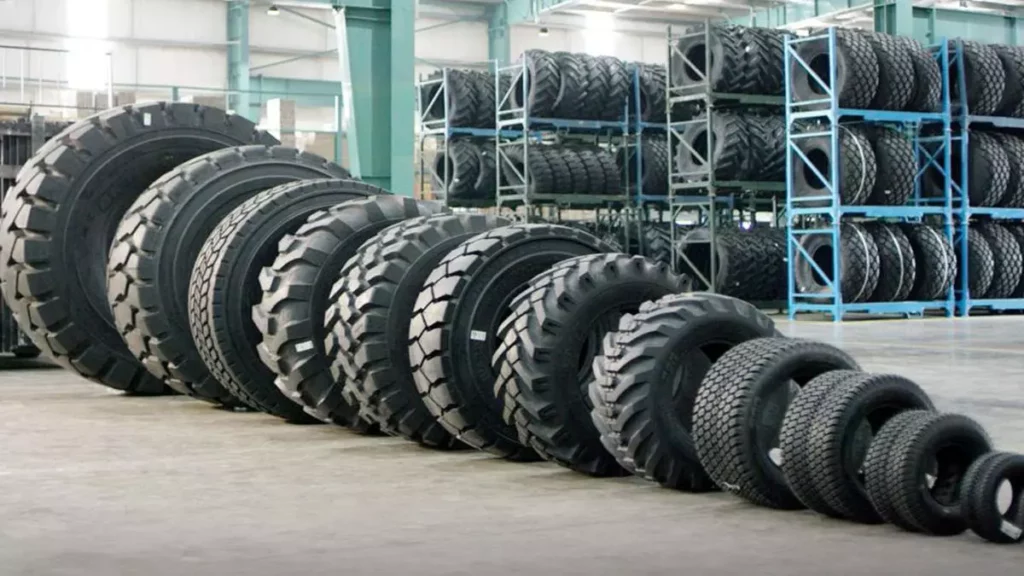Energy-saving tires, also called fuel-efficient tires, help you save gas and be kind to the environment. They do this by using special materials and designs that make it easier for your car to roll smoothly. This means you use less gas, create less pollution, and leave a smaller mark on the Earth.
Moreover, these tires also last longer, so you don’t have to change them as often, which is good for nature too. Plus, they make your ride comfortable and quiet. To make sure they work well, follow the rules and take care of them, but how much you save depends on your car, how you drive, and where you drive.
How do energy-saving tires reduce fuel consumption?

Energy-saving tires achieve reduced fuel consumption by minimizing rolling resistance through specialized materials and tread designs.
Explanation of how energy-saving tires reduce rolling resistance
Rolling Resistance: Rolling resistance refers to the force that opposes the motion of a tire as it rolls on a road surface. It occurs due to the deformation of the tire and the interaction between the tire and the road. The energy required to overcome this resistance results in fuel consumption.
Specialized Tread Compounds and Designs: Energy-saving tires are designed with specialized materials and tread patterns. These materials have a lower hysteresis, which means they deform less as the tire rolls. This reduced deformation minimizes energy loss in the form of heat and mechanical work, effectively reducing rolling resistance.
Tread Patterns: The tread pattern of energy-saving tires often features shallower grooves and a smoother surface compared to standard tires. This design reduces the friction between the tire and the road, resulting in less energy wasted.
Impact on fuel efficiency and cost savings
Improved Fuel Efficiency: By reducing rolling resistance, energy-saving tires make it easier for a vehicle to move. The engine doesn’t have to work as hard to maintain a given speed, which means less fuel is consumed.
This improved fuel efficiency can lead to significant savings over time, especially for vehicles with a high annual mileage.
Cost Savings: The reduction in fuel consumption translates into cost savings for the vehicle owner. While energy-saving tires may have a slightly higher upfront cost compared to regular tires, the money saved on fuel can offset this cost over the life of the tires.
Additionally, because these tires tend to last longer due to their durable materials, the frequency of tire replacements is reduced, further contributing to cost savings.
Environmental Benefits: In addition to cost savings, the lower fuel consumption associated with energy-saving tires leads to a reduction in carbon emissions. This aligns with environmental goals and contributes to a more sustainable and eco-friendly driving experience.
What are the environmental benefits of energy-saving tires?
Energy saving tires, also known as low-rolling-resistance tires, offer several environmental benefits compared to traditional tires.
Reduction in carbon emissions
Greenhouse Gas Emissions: Energy-saving tires play a significant role in reducing the carbon emissions associated with vehicle operation. When a vehicle’s tires have lower rolling resistance, it requires less energy to move, and the engine expends less fuel to maintain speed.
As a result, there is a decrease in the production of carbon dioxide (CO2), which is a major greenhouse gas responsible for climate change.
Environmental Impact: Lower carbon emissions benefit the environment by mitigating the negative effects of climate change. The reduction in CO2 emissions helps to slow down global warming, limit sea-level rise, and protect ecosystems, making energy-saving tires an important component of eco-friendly transportation.
Decreased environmental impact
Tire Disposal: Energy-saving tires often have a longer lifespan due to their advanced rubber compounds and reduced wear from lower rolling resistance.
Furthermore this means that fewer tires need to be manufactured and disposed of, reducing the environmental impact associated with the tire production and disposal process.
Resource Conservation: The production of tires requires the use of various raw materials, including natural rubber and synthetic compounds.
Energy-saving tires, by lasting longer, reduce the demand for these resources and contribute to resource conservation.
Landfills and Waste: Since energy-saving tires are replaced less frequently, there is a decrease in the number of old tires ending up in landfills.
In addition, this reduces the burden on waste management systems and helps prevent the environmental challenges associated with tire disposal.
Contribution to sustainability
Sustainable Transportation: Energy-saving tires are an integral part of sustainable transportation practices. They align with global efforts to reduce the environmental impact of personal and commercial vehicles, making it easier for individuals and businesses to adopt more eco-conscious driving habits.
Regulatory Compliance: In some regions, there are regulations and standards in place that encourage or require the use of energy-saving tires to meet fuel efficiency and environmental goals.
Compliance with these regulations helps ensure that vehicles on the road are contributing to a more sustainable and environmentally responsible future.
Consumer Choice: Energy-saving tires offer consumers the opportunity to make a positive impact on the environment through their choice of tires.
By choosing these eco-friendly options, individuals can actively contribute to sustainability efforts and reduce their personal carbon footprint.
How do energy saving tires extend tire lifespan?

Energy saving tires can extend tire lifespan through several design features and characteristics that reduce wear and tear on the tire.
Benefits of advanced tire materials
Durable Rubber Compounds: Energy-saving tires are typically manufactured with advanced rubber compounds that are designed for longevity. These materials are engineered to resist wear and tear, resulting in a longer-lasting tire.
Moreover, they are often formulated to be more resilient to the effects of friction and heat generated by reduced rolling resistance.
Reinforced Construction: The construction of energy-saving tires may incorporate reinforcing materials like nylon or steel belts that enhance their structural integrity. Moreover, these materials help maintain the tire’s shape and performance over a more extended period.
Reduced frequency of tire replacements
Extended Tread Life: The durability of energy-saving tires translates to a longer tread life. Tread is the part of the tire that makes contact with the road and wears down over time. With energy-saving tires, the reduced wear rate allows the tread to last longer before reaching the point of replacement.
Less Maintenance: Because energy-saving tires require replacement less frequently, vehicle owners spend less time and money on tire maintenance and replacements. This leads to a more convenient and cost-effective ownership experience.
Cost savings and environmental advantages
Reduced Expenses: The longer lifespan of energy-saving tires results in cost savings for vehicle owners. While these tires may have a slightly higher initial purchase cost, the money saved on frequent tire replacements and the fuel economy improvements can outweigh the upfront investment.
Environmental Impact: Fewer tire replacements mean fewer old tires ending up in landfills, reducing the environmental burden associated with tire disposal. This aligns with sustainability goals and helps minimize the environmental impact of tire manufacturing and waste.
Resource Conservation: The extended tire lifespan reduces the demand for raw materials in the production of tires. This contributes to resource conservation and reduces the environmental footprint associated with tire manufacturing.
FAQ’s
What is the meaning of energy-saving tires?
Energy-saving tires, also known as fuel-efficient tires, are designed to reduce rolling resistance, making it easier for your vehicle to move. This results in improved fuel efficiency, cost savings, and reduced carbon emissions.
How do tires reduce fuel consumption?
Energy-saving tires reduce fuel consumption by minimizing rolling resistance, which means your car needs less energy to move forward. This efficiency improvement results in reduced fuel consumption and cost savings.
Which tires are most fuel-efficient?
The most fuel-efficient tires are often labeled as “energy-saving” or “fuel-efficient” tires. Look for tires with low rolling resistance ratings and high fuel efficiency standards, usually indicated by labels or manufacturer specifications.
Are eco tires better than normal tires?
Eco tires are better if you prioritize fuel efficiency and environmental impact. They can save you money on fuel and reduce carbon emissions. However, the choice depends on your preferences and driving needs.
Do eco tires wear quicker?
Not necessarily. While some eco tires may wear slightly faster due to their tread design, many are engineered for a balance between fuel efficiency and durability. Proper maintenance and driving habits also play a role in tire lifespan.
Are eco tires safe?
Yes, eco tires are designed with safety in mind. They maintain good handling and ride comfort and often have features that enhance safety. However, like all tires, their safety depends on proper maintenance and usage.
Final Words
Energy-saving tires are a great choice for many reasons. They help you save money by using less fuel, which is good for your wallet. They also help the environment by reducing carbon emissions, which is good for the planet. Plus, these tires last longer, so you don’t have to buy new ones as often. They make your ride comfortable and quiet, which is good for a pleasant driving experience.
So, if you want to save money, be kind to the Earth, and enjoy a smoother ride, energy-saving tires are the way to go. Just remember to take care of them and follow the rules for the best results.

